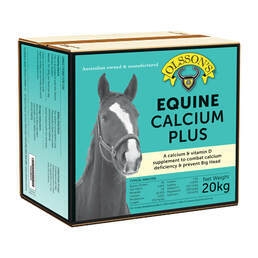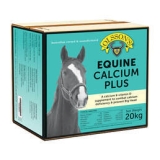



During periods of dietary calcium deficiency, calcium is mobilised from the bone to keep blood calcium levels ‘normal’. When a dietary calcium deficiency occurs for prolonged periods of time the calcium mobilised from the bone is replaced by fibrous tissue, resulting in weak bones and a ‘Big Head’ appearance. This is most commonly seen in horses grazing tropical grasses such as kikuyu, buffel, setaria, green panic, para grass, pangola grass, guinea grass, signal grass and purple pigeon grass. These grasses contain substances called oxalates that bind up calcium, making it unavailable for absorption through the bowel. Horses eating moderate to high amounts of high phosphorous feeds like cereal grains can also have a calcium blocking effect.
Feeding Instructions: Intake is recommendation only, higher intakes are normally the result of mineral deficiencies. Feed rates are also dependent on pasture conditions. Horses: 50-100g per head per day Feed on an ad-lib basis whenever offending grasses are accessible. Suitable for all types of horses. For best results feed with Olsson’s Biochar. Avoid contact with skin and eyes.
Storage Instructions: Store out of direct sunlight and under cover. Store below 30ºC (room temperature).
